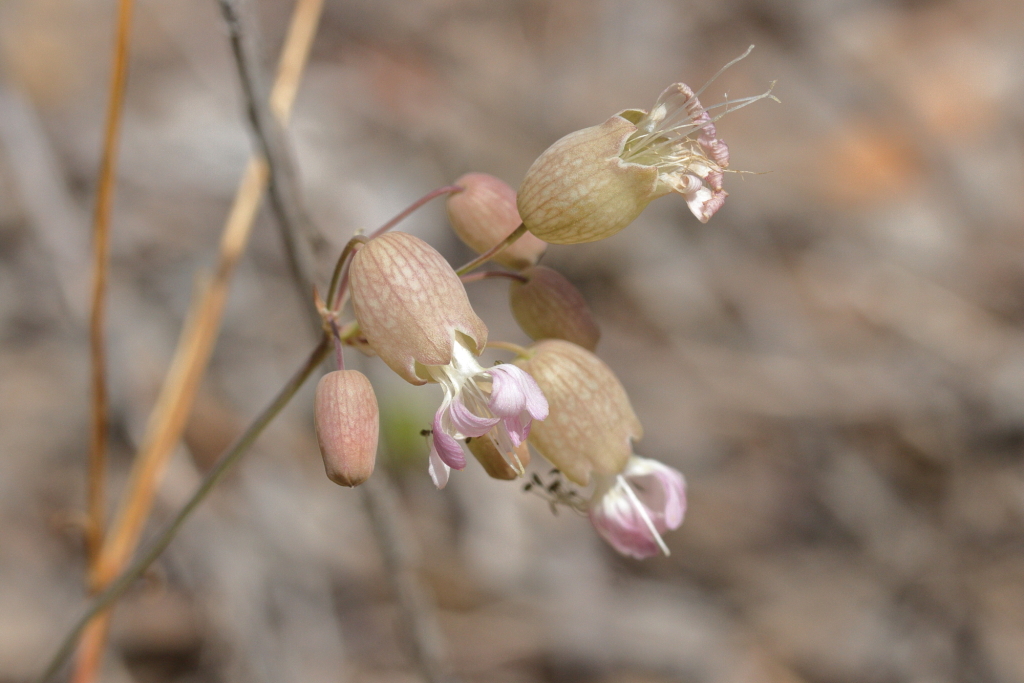Silene vulgaris subsp. vulgaris
Bladder CampionPerennial, glabrous or sparsely pubescent, often glaucous. Stems branching, basally woody, decumbent and caespitose, 25–90 cm long. Leaves sessile or rarely shortly petiolate, ovate to lanceolate, rarely linear-lanceolate, 20–60 mm long, 3–12 mm wide, acute. Inflorescence lax, usually several-flowered; bracts scarious. Flowers bisexual; pedicels often drooping, 5–30 mm long; calyx ellipsoid, inflated, 20–30-veined, reticulate, 8–15 mm long, more or less glabrous, calyx-lobes triangular-acute; petal-limb up to 10 mm long, white, pink or violet, deeply bifid; styles 3. Capsule broadly ovoid-conical, 15 mm long, with erect teeth; carpophore c. 5 mm long, glabrous; seeds subreniform, flat or convex, black, minutely asperate-tuberculate, 1–1.5 mm long. Flowers mainly Oct.–Dec.
GleP, Brid, VVP, VRiv, GipP, WaP, Gold, CVU, VAlp. Also naturalised WA, SA, Qld, NSW, ACT, Tas. Native to Europe, western Asia. A widespread but uncommon weed of more temperate areas of Australia.
The form with somewhat smaller, linear-lanceolate cauline leaves, occurring mainly in coastal South Australia, Victoria and Tasmania possibly equates with the western European subsp. angustifolia (Mill.) Hayek.
Adams, L.G. (1996). Caryophyllaceae. In: Walsh, N.G.; Entwisle, T.J., Flora of Victoria Vol. 3, Dicotyledons Winteraceae to Myrtaceae, pp. 228–271. Inkata Press, Melbourne.
 Spinning
Spinning


